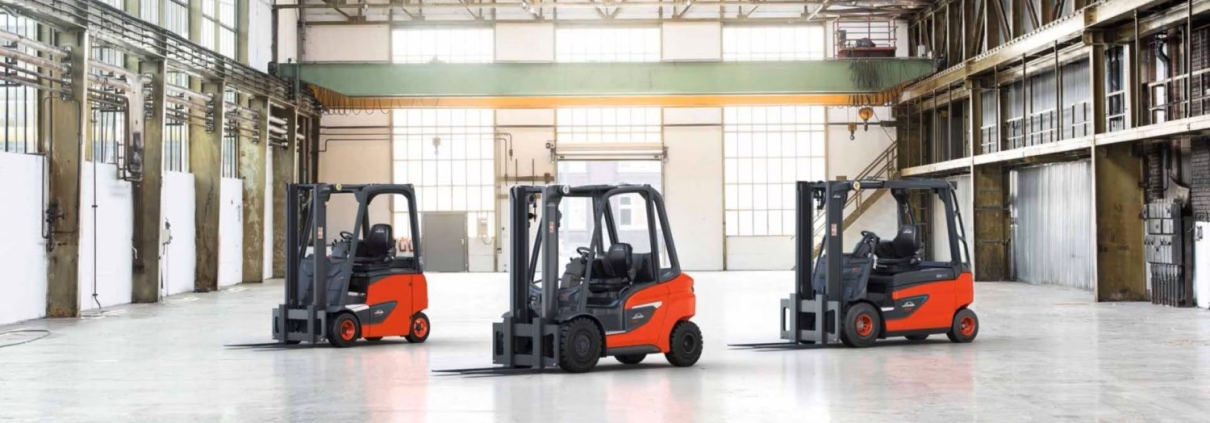How Long Does It Take to Charge a Forklift Battery? A Practical Guide for Operations Managers
When you’re running a warehouse, logistics center, or manufacturing facility, one question often determines whether a shift runs smoothly or falls behind schedule:
How long will the forklift battery take to charge?
To give you a clear and immediate answer, here is a quick comparison of charge times for the most common forklift battery types in the market.
Forklift Battery Charging Times (Quick Reference Table)
| Battery Type | Typical Voltage / Capacity | Standard Charge Time | Notes |
| Lead-Acid (Flooded) | 24V / 36V / 48V (300–900Ah) | 8–12 hours | Requires cool-down period; charging too fast damages plates |
| AGM / Gel Lead-Acid | 24V / 36V / 48V | 6–10 hours | Slightly faster than flooded lead-acid |
| Lithium-Ion (LFP) | 24V / 36V / 48V (200–700Ah) | 1–3 hours | Fast charging supported; no cool-down required |
| High-Rate LFP Fast Charging | 48V systems | 45–90 minutes | Depends on charger amperage (1C–2C charging) |
This answers the user’s primary search intent immediately.
But understanding why charging takes this long—and what it means for daily operations—is where the real value lies.
Why Charging Time Matters More Than You Think
Users who search “how long does it take to charge a forklift battery” usually have deeper operational concerns. Charging time affects:
- Shift planning
- Truck availability
- Labor productivity
- Number of spare batteries needed
- Overall throughput efficiency
In other words, charging time is directly tied to operational uptime and cost.
Below, we break down the real factors influencing charging time and what they mean for your fleet.
Why Lead-Acid Forklift Batteries Take 8–12 Hours to Charge
Lead-acid forklifts have been the industry standard for decades, but they come with limitations that slow down charging.
- The Chemistry Is Slow by Nature
Lead sulfate must be converted back into active material during charging—a process that cannot be rushed without risking overheating or permanent damage.
- The “Absorption Stage” Adds Hours
Once a lead-acid battery reaches ~80% state of charge, the final 20% can take 2–3 additional hours due to taper charging.
- Heat Must Be Managed
Lead-acid batteries get hot while charging.
Standards require:
- 8 hours charging
- 8 hours cooling
This means a full charge cycle can effectively require 16 hours before the truck is safely usable again.
- Opportunity Charging Is Limited
Frequent partial charges shorten lead-acid lifespan dramatically.
These bottlenecks explain why facilities using lead-acid batteries often rely on:
- Multiple spare batteries
- Battery rooms
- Rotational systems
- Strict charging schedules
Why Lithium-Ion Charges 4–6 Times Faster
The purpose here is not to promote; instead we explain the technical reasons charging is faster.
- Higher Charge Acceptance & Low Internal Resistance
Lithium iron phosphate (LFP) batteries accept current more efficiently, allowing:
- 1C charging routinely
- 2C charging in some applications
This enables full charging in 1–3 hours.
- No Absorption Stage
LFP chemistry does not require a long tapering phase at the end of charging.
- No Cool-Down Period
Lithium thermal management prevents overheating, allowing:
- charge → discharge → charge
all within the same shift.
- Opportunity Charging Friendly
You can plug in during breaks or shift transitions without reducing cycle life.
These characteristics explain why fast-charging LFP is becoming standard in multi-shift operations.
Operational Factors That Influence Charging Time
Regardless of chemistry, several site-level variables also affect charging speed:
- Charger Output (Amperage & Voltage)
A 48V 200A charger will charge significantly faster than a 48V 80A unit.
- Battery Age and Health
- Older lead-acid batteries charge more slowly
- Aged batteries generate more heat
- Sulfation increases internal resistance
- Ambient Temperature
- Heat slows charging (safety limits)
- Cold temperatures reduce lithium charge acceptance
- Daily Workload
Deeper discharges = longer recharge time.
Understanding these factors helps operators optimize shift planning and downtime.
How Charging Time Affects Your Daily Operations
Charging time is not just a technical spec—it shapes the entire workflow.
- Multi-Shift Facilities Need Faster Turnover
If you run 2–3 shifts:
- Lead-acid often requires spare batteries
- Lithium can rotate continuously with opportunity charging
- Spare Battery Inventory Costs
A facility using lead-acid may require:
- 2–3 batteries per forklift
- A storage/charging room
- Employees for battery swaps
- Downtime = Real Cost
Every hour a forklift sits idle:
- Orders pile up
- Labor waits
- Throughput drops
Reducing charge time directly increases operational availability.
When Does It Make Sense to Move to Faster-Charging Options?
Without marketing language, here are the practical indicators:
Choose lead-acid if:
- Single-shift operations
- Predictable workflow
- Lower upfront cost is critical
Choose lithium-ion if:
- Running 2–3 shifts
- Want to eliminate battery swaps
- Need opportunity charging
- Want to reduce downtime
- Electrical infrastructure supports fast chargers
Faster charging becomes especially valuable in high-throughput environments where minutes matter.
Final Takeaway
The short answer to the original question is simple:
- Lead-acid forklifts usually need 8–12 hours to charge.
- Lithium-ion forklifts typically need 1–3 hours.
But the deeper truth is that charging time affects more than just how long a battery sits on a charger—it impacts your entire operation’s efficiency, flexibility, and long-term cost.
By understanding the factors behind charging speed, you can choose the right battery system for your fleet and build shift schedules with fewer surprises and less downtime.
Recommended Reading
To help you explore forklift batteries in more detail and make informed decisions for your fleet, check out these related articles:
- The 2025 Forklift Battery Guide: What Operators Need to Know – A comprehensive guide to different battery types, performance, and selection considerations for warehouse and logistics operations.
- Industrial Forklift Lithium-Ion Batteries: A Deep Dive into Integration, Efficiency, and Operational Readiness – Focused on operational efficiency, integration, and readiness considerations for lithium-ion forklifts in industrial environments.


